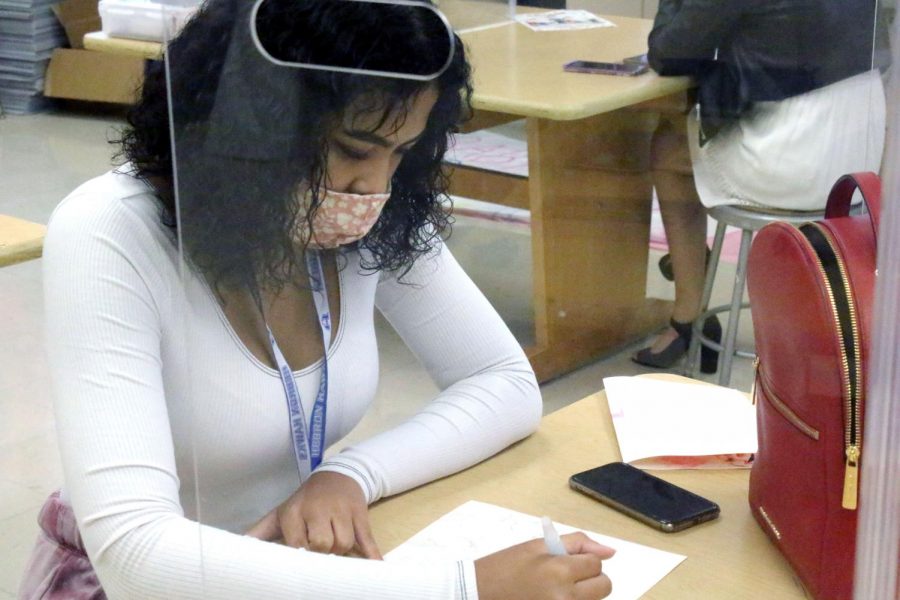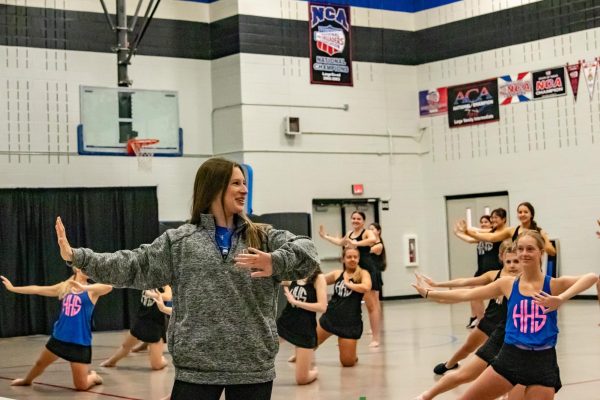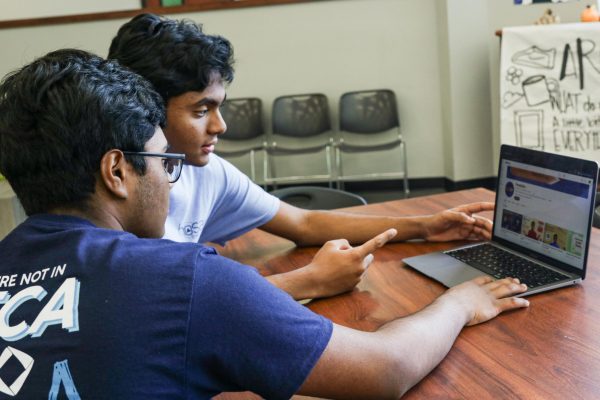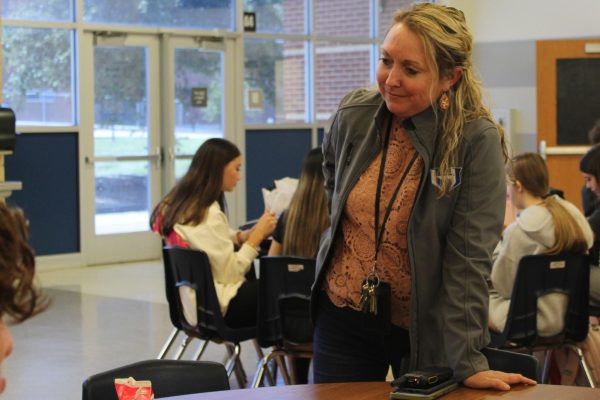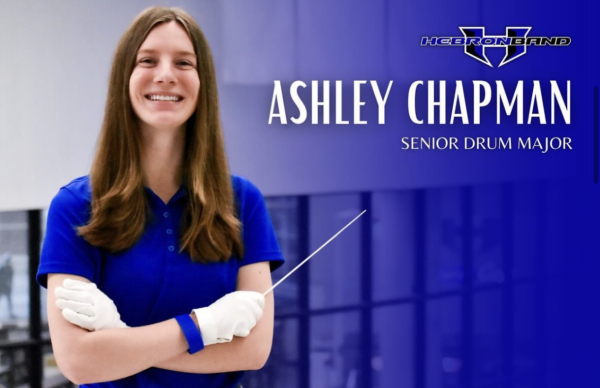Sick art
AP Art students prepare for future amidst pandemic
This time last year, art students meandered near the sink to wash vivid colors off their brushes. They gathered at each other’s desks to give advice on how to elevate their work. This year, plexiglass guards separate desks and students critique each other’s art from across the room. Advanced Placement Art looks different this year, but they’re still creating.
Many students take AP Art to prepare to attend art school. An already stressful process, students are feeling additional pressure about applying to these schools and completing their portfolios in the midst of the pandemic.
“[COVID-19 has] made it a little sadder,” AP Art teacher Jennifer Russell said. “I always say that [room] 1110 houses all the strays, weirdos, losers, freaks and geeks and I am very proud of that. COVID-19 has made it slightly dimmer because we have to stay away from each other. Part of the greatness of art is being able to collaborate and ask for help.”
AP Art students can usually be spotted carrying a toolbox full of art and supplies or a portfolio because they have to take their art home. Due to COVID-19, students can’t leave their art and supplies in the art room. Russell has also had to make changes to the way she teaches class because of COVID-19 procedures.
“You have this hour and a half to work and sometimes we have critiques,” Russell said. “I’m having everyone clip their pieces to the plexiglass desk shields because I don’t know how else to do it. I was thinking we could have the kids scan a QR code and it takes them to a Google Form for them to put their commentary, so we can prevent them from having to touch paper and hand them to each other. It’s definitely different.”
AP Art students have to pick a concentration, which means they pick a concept and make about ten pieces around that concept or idea. For the AP exam, they submit a portfolio of a certain amount of pieces and a juror looks at their art and decides whether or not they pass based on specific criteria.
“For an AP kid, you have to turn in a body of work,” Russell said. “You don’t just go to the gym and sit at a desk, freezing for the day and take an AP exam. That’s not how AP Art works.”
For many students, passing this exam is the first step to pursuing an art career. Seniors Cinta Isom and Sarah Rizvi plan on attending art school to study fashion design. Both are looking into schools like the Fashion Institute of Technology (FIT) and Savannah College of Art and Design (SCAD).
“[A portfolio] is usually 10 to 20 pieces of artwork,” Rizvi said. “Right now I’m working on mine and there are a few sketches, a few paintings, some graphic design. I think the process is fairly stressful. You have to keep up with a lot of stuff and work on your portfolio at the same time, all while working at school.”
Despite the pandemic changing many aspects of the AP art process and applying to art schools, Isom and Rizvi stay passionate about art and what it means to them. Both started art at a young age and said that it has been a constant in their lives.
“I love that [art] really makes you think about the piece you’re looking at,” Isom said. “Also the way art makes you feel sometimes. If art can make you feel emotion, then that’s a really strong piece. You get really good insight on what’s in the [artist’s] mind and how they view the world because everyone views it differently.”
Even though COVID-19 has resulted in canceled events, artists can still showcase their passion this year. Visual Arts Scholastic Event (VASE) has gone virtual and Scholastic Art and Writing has been a virtual turn-in for a while. The LISD District Art Show is scheduled for in-person attendance in February.
“What I mainly like about [art] is the stories you can tell,” Rizvi said. “With art, you can do whatever you want with it. Even if you don’t want it to have a message, you can do weird splatter paints and it can be considered as something else and everyone can have their own interpretation of it. I think that’s what makes it so exciting is that even if you want it to mean something else, someone who sees it might see it as a reflection of their own life. That’s really cool to me.”
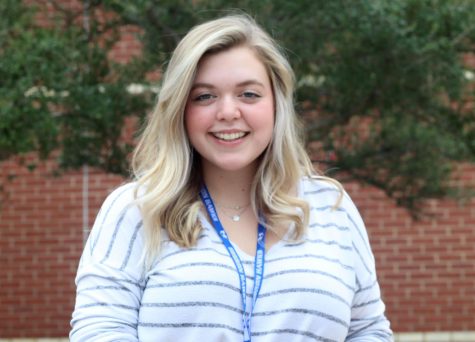
Senior Hailey Dirks is the Managing Editor and this is her second year on staff. In her free time, she loves reading, listening to music, painting and...



